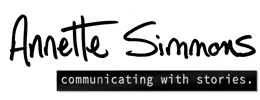
Story as Problem/Solution
It’s tempting to define story as a simple problem/solution equation. But problem/solution doesn’t accommodate the reality that humans experience problems that are simultaneously external and internal, and frequently caused by ourselves as much as the actions of others. Limiting a story to a format of problem/solution risks forcing a narrative to misrepresent certain solutions as more effective than they actually are. For instance, stories in the 1990s that blamed inconsistent standards as a primary cause of inadequate education led to massive investments in standardization and common core curriculums. Yet increasing the consistency of standardized approaches has not proved to the be the cure these stories promised. In many circumstances standardization actually decreased teachers’ ability to adapt their methods to suit the natural inconsistencies of diverse situations.
Run an experiment on yourself to test the results of using problem/solution as a format. Pull up a real-life significant emotional experience and impose the problem/solution frame on it until you can see for yourself what gets lost in translation. I’ve got one. The problem: I wasn’t happy living in my hometown. The Solution: I moved. The missing elements of the story are that I still love many aspects of my hometown. My mother is living and I have great friends there. I told my mother that I moved for business reasons but that’s not entirely true, either. I didn’t want to be rude, but I also wanted to be in a more diverse culture that was in better economic shape than my hometown. Plus, I really like starting over because it’s a creative process. And of course, I might end up unhappy again in my new town if I’m simply in the habit of being unhappy. If I told the story as if moving solved my problems it would be a misleading oversimplification.
Excerpt from Chapter 11, 3rd ed. of The Story Factor (2019) AUDIBLE VERSION HERE


2 thoughts on “Storytelling Moral Survival System: Part ten (templates)”
Exactly so.
I think people generally misunderstand and fail to plan for the law of unintended consequences when trying to solve a problem. And as you point out, that usually arises from failure to articulate the entirety of the landscape in which the “problem” resides (not to mention the “solution” conditions). The example of standardization is one that fits that bill. There is always a “solution” that is simple, intuitive, easy and WRONG. Sometime it takes us a while to see that when the results finally roll in. The current lockdown edicts are an example as well.
In my professional technical work at the NRC there was always a big push for nuclear plant standardization. The thought is that it would be easier to license and regulate because they would all be the same. But as one coming out of the nuclear navy where entire classes of ships had the exact same design, manufacturing, and layout, I could go from one boat to another with my eyes closed and put my hand on the exact same piece of equipment on another boat. The technical manuals were identical, the operating procedures were identical, and the crew training was identical. Yet invariably some boats operated better than others and some had persistent problems with some equipment that didn’t occur at others. Then I remembered the quote from Emerson, “A foolish consistency is the hobgoblin of little minds, adored by little statesmen and philosophers and divines.” One set DOES NOT fit all and the education standardization model proves it, yet it persists.
The danger of templates lies in the failure to realize that life is infinitely more complicated than we know. In engineering, we refer to this as getting the boundary conditions correct for an analysis. For storytelling, it is about recognizing the complicated existence of human diversity. Let us not stray into a foolish consistency.
Yep. I really wonder how long it will be before they realize the damage that standardized testing as done to education.